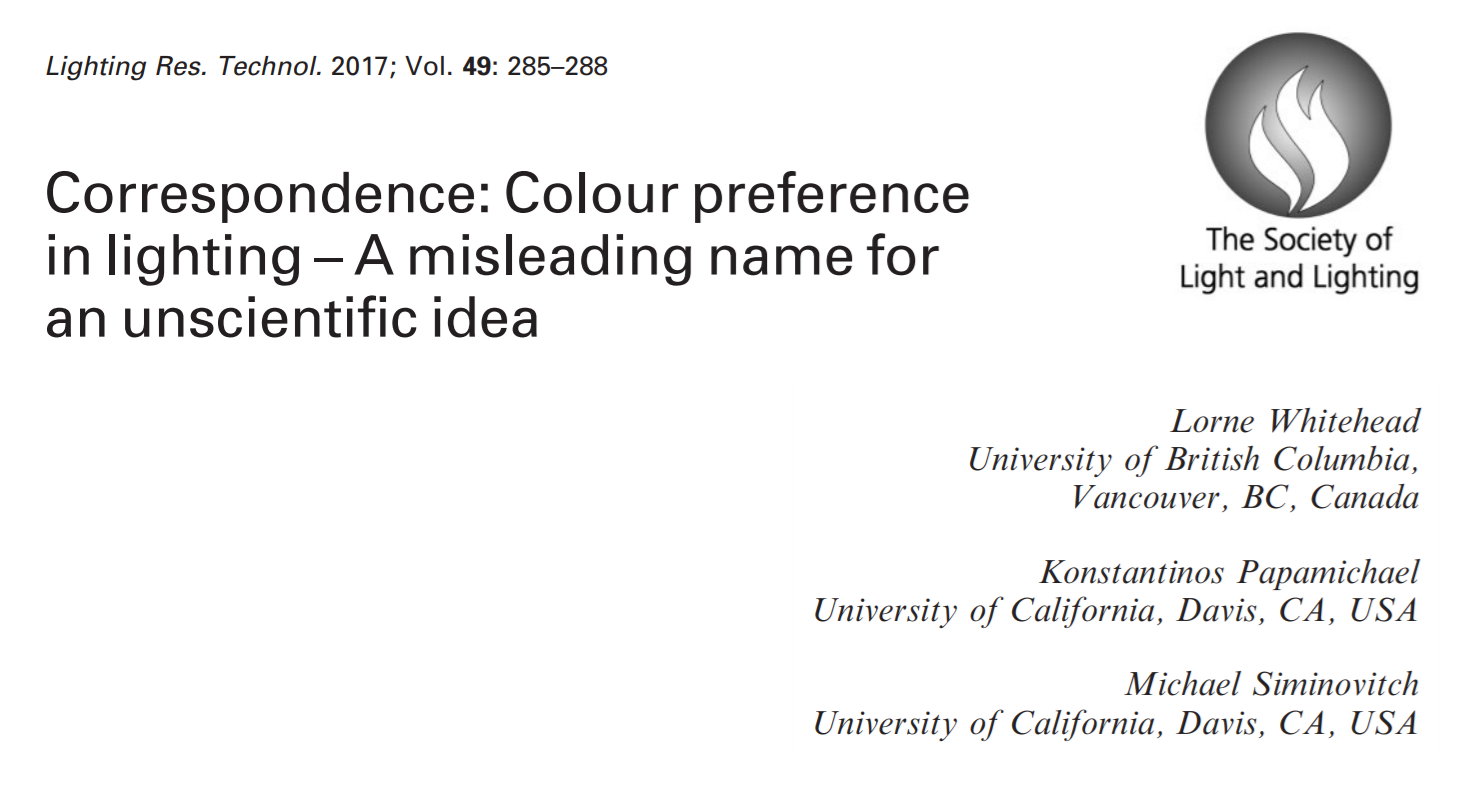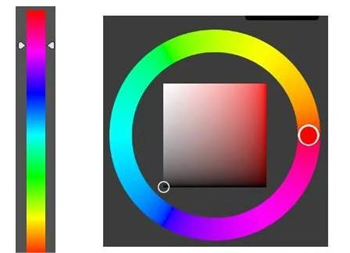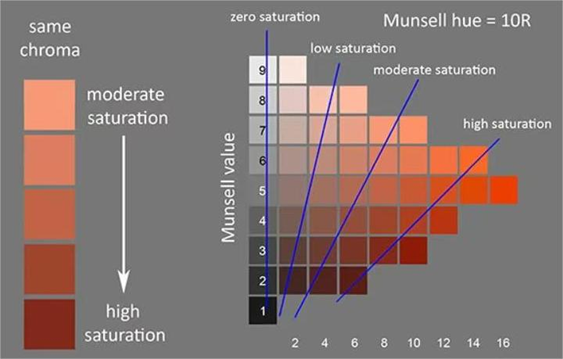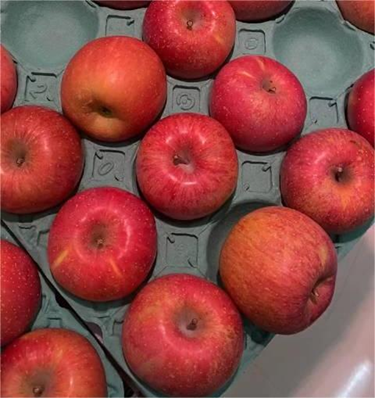学界对白光光源的显色品质量化始于20世纪60年代,光源技术和颜色科学自此都取得了长足的进步。近日,国际照明委员会(CIE)发布了关于光源显色品质的立场声明(第二版),该CIE立场声明是更新了2015发布关于此议题立场声明的第二版。其核心要点如下:
1.CIE于2017年制定颜色保真度指数 (Rf),以解决此前在显色指数(Ra)中发现的技术问题。2.当时,CIE 224:2017 《CIE 2017用于精确科学用途的颜色保真度指数》的编写者建议将新指标用于科学目的而非工业应用。3.颜色保真度指数(Rf)已被广泛使用,目前没有任何证据表明其使用存在问题。4.CIE建议照明领域采用颜色保真度指数(Rf),并在相关法规、规范和标准中取代显色指数(Ra)。5.为了有序过渡,CIE建议在新指标被广泛接受之前,同时报告颜色保真度指数(Rf)及显色指数(Ra)这两个指标。6.要全面了解颜色质量,还需要开发光照颜色偏好度指数。目前这项工作正在进行中。
【iLLab:可以看出,2017年是光源显色品质这一议题被广泛讨论的关键年份。我们看到一篇在2017年发表在LR&T的深入讨论此问题的通讯文章。虽然是八年前的讨论,但内容在今天看来仍具有启发性。】Occasionally, a number of respected, independent scientists reach a consensus view within the peer-reviewed scientific literature that, unfortunately, is later seen as clearly incorrect. 1 Scientists, being human, are not entirely immune to the well-known phenomenon of groupthink, 2 which can result in errors, such as claims about ‘polywater 3 ’ in the late 1960s and ‘cold fusion 4 ’ in the late 1980s. Today, there is a widespread conceptual issue within the field of light source spectral optimization, involving the expression ‘colour preference’, which is not a defined scientific term and may be unclear and quite misleading.有时候,一些受人尊敬的独立科学家在同行评审过的科学文献中,会达成一个在当时看来是共识,但后来却很遗憾地被视为是明显错误。科学家也是人,也不能完全从“趋同思维”这一众所周知的、会导致错误的心理现象中幸免,例如20世纪60年代末的所谓的“聚合水”和20世纪80年代所谓的“冷核聚变”。今天,在光源光谱优化领域有一个广泛讨论的概念,涉及“颜色偏好”这样的表述,这是一个未经定义的科学术语,并且可能是不清晰的,甚至是完全误导性的。A keyword search of the scientific literature over the last 20 years shows that an average of about five papers per year have used the term ‘colour preference’ to describe observers’ preferences for certain distortions of surface colour appearance that are caused by illumination from light sources that have imperfect colour fidelity. An underlying and unsubstantiated assumption is that ‘colour preference’ is a measurable, objective phenomenon that is useful for optimizing the long-term value of illumination for users. As an aside, the authors have previously published work using this unclear term; in the future they will not. They feel there is no shame in unintended errors as long as, once recognized, they are not repeated.对过去20年间科学文献的关键词检索显示,平均每年约有5篇论文使用了术语“颜色偏好”来描述观察者对“表面颜色呈现”某种畸变的偏好,这是由颜色保真度不完美的光源照射引起的。一个潜在的、未经证实的假设是,“颜色偏好”是一种可测量的客观现象,有助于优化照明对用户长期的价值。顺便一提,一些作者之前发表的工作使用了这一不清晰的术语,后来他们不再这样做,他们觉得只要一旦承认并且不再重复,就不需为此无意的失误感到羞愧。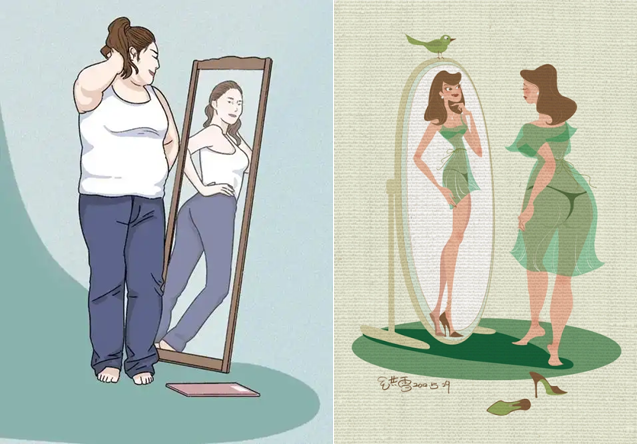 To help explain the nature of our concerns with the concept of ‘colour preference’ in lighting, we will start with an analogy about mirrors. The quality of a mirror depends on its reflection efficacy (to yield bright images) and also on its reflection fidelity (to yield undistorted images). Ensuring these aspects of quality can increase cost, so it could be helpful to study how they are valued by mirror users. One way to do so could be to ask them to compare their reflections in mirrors that have different degrees of efficacy and fidelity. In the course of such research, an interesting ‘discovery’ could emerge – a tendency for people to choose mirrors in which their reflection appears slimmer.This would be a perfectly reasonable observation, albeit one with limited usefulness. Now imagine the following unreasonable next steps: 为了帮助解释我们对照明中“颜色偏好”概念的关注的性质,我们将从镜子的类比开始,镜子的质量取决于其反射效率(成像明亮)和反射保真度(成像不失真)。确保质量的这些方面会增加成本,因此研究镜子的用户如何评价它们可能会有所帮助。一种方式是请用户比较自己在不同效率和保真度的镜子中的影像。在这样的研究过程中,可能浮现一个有趣的“发现”——人们倾向于选择镜子中自己的影像看起来更苗条的镜子。这将是一个完全合理的观察,尽管用途有限。现在请想象以下不合理的后续步骤:First, some researchers claim that this observation is a discovery in human perception, which they therefore give a name, ‘reflection preference’, implying that it is an important new idea, on a par conceptually with reflection fidelity. 首先,一些研究人员声称这一观察是对人类感知的发现,所以他们为此命名“反射偏好”,暗示这是一个重要的新概念,在概念上与反射保真度相当。Second, they argue that reflection fidelity is an outdated idea and that in the future, mirrors should be optimized for ‘reflection preference’ – in other words mirrors should distort a person’s reflection in a slimming manner. 其次,他们辩称反射保真度是一个过时的概念,未来镜子应该根据“反射偏好”进行优化,换句话说,镜子应该以一种显瘦的方式扭曲一个人的镜像。Third, they lobby for regulations that favour the use of such mirrors in most applications.最后,他们游说法规,支持在大多数应用场景中使用此类镜子。These steps would be unreasonable because(a) the label ‘reflection preference’ is incorrect and misleading, since it suggests there is a universal underlying measurable phenomenon, when there is no evidence for that; (a) 标签“反射偏好”是不正确和误导性的,因为它表明存在一种普遍的基础可测量现象,而并没有证据证明这一点;(b) there is no evidence that, in general, people would be better off with such mirrors, and there are good reasons to think otherwise; (b) 没有证据表明,一般来说,人们使用这种镜子会过得更好,而有充分的理由认为人们会过得不好;(c) because human perception is highly adaptive, short-term perception observations cannot reliably predict long-term human value; (c) 由于人类感知具有高度适应性,短期感知观察不能可靠地预测人类的长期价值;(d) the preference for a ‘slimming’ effect is easily explained by factors that have no connection to long-term well-being; (d) 对“瘦身”效应的偏好很容易被一些因素解释,这些因素与长期福祉无关;(e) overall, it is significantly over-reaching to believe that human well-being can be improved through a special type of reflection distortion. (e) 总体而言,相信人类福祉可以通过一种特殊类型的反射扭曲来改善,这显然是过度延伸。Not surprisingly, there is no scientific movement underway to promote slimming mirrors in our society. Unfortunately, however, there is a serious analogous problem today in the lighting industry. In this analogy, the objective concept of ‘reflection fidelity’ is akin to that of ‘colour fidelity’, while the unscientific idea of ‘reflection preference’ is akin to that of ‘colour preference’.毫不奇怪,在我们的社会中没有任何正在进行中的科学运动推动瘦身镜。然而,不幸的是,今天在照明行业中存在类似的严重问题。在这项类比中,客观概念“反射保真度”类似于“颜色保真度”,而非科学概念“反射偏好”类似于“颜色偏好”。In lighting research, ‘colour preference’ has come to describe experiments in which subjects are shown matching sets of objects in two scenes illuminated by different light sources. While comparing the scenes, either side-by-side or in close succession, they are asked to identify the scene they prefer. As in the preceding discussion about ‘reflection preference’, much of the literature on ‘colour preference’ embodies one or more of the following five problems:在照明研究中,“颜色偏好”用于描述:“实验中被试者在不同光源照射的两个场景中看到匹配的一系列物体,当比较场景时,无论是并排地(side-by-side)还是连续地(in close succession)比较,被试者都被要求确定他们更偏好的场景。”正如前述关于“反射偏好”的讨论,许多关于“颜色偏好”的文献都体现了以下五个问题中的一个或者更多:1. The expression ‘colour preference’ is misleading in this contextThe expression ‘colour preference’ is much more commonly used in the field of vision psychology,where it has a completely different meaning 5 that relates to preferences people may have for various surface colours. 6 A keyword literature search over the last 20 years identifies on average about 150 papers on this topic per year. A more appropriate term within the lighting industry could be ‘colour shift preferences’, because the comparison is about shifts of surface colours, rather than the colours themselves.“颜色偏好”的表述被更多地在视觉心理学领域采用,在该领域,它有完全不同的含义,是关于人们对于各种表面颜色可能所拥有的偏好。在过去20年的关键词文献搜索中,平均每年约有150篇关于该主题的论文。在照明行业中,一个更合适的术语可能是“颜色偏移偏好”,因为比较是关于表面颜色的偏移的,而不是颜色本身。2. Light source colour shift preferences have not been shown to be usefulA significant problem in the ‘colour preference’ lighting literature is the underlying assumption of usefulness in predicting something of value. The concept of colour fidelity for light sources is objective – it assesses the average extent, relative to a just noticeable difference, that the colours of objects are shifted from the appearance they have when illuminated by a reference source. In contrast, ‘colour shift preferences’ are largely subjective. The primary application for such light-source-induced colour shifts has been for retailers to falsely create the impression that certain goods, such as fruits and vegetables, are more colourful than they truly are. Generally, economists and ethicists agree that deception in the marketplace is counterproductive and should be discouraged or even prohibited. For example, the US FDA Food Code 7 Section 3-601.12 requires that ‘lights may not be used to misrepresent the true appearance, colour, or quality of a food'.“颜色偏好”照明文献中的一个重要问题是,在预测有价值的东西时,有用性的基本假设。对于光源,颜色保真度的概念是客观的,它评估的是相对于最小可觉差,物体的颜色当其被参考光源所照射时,从他们具有的外观被偏移的平均程度。相反,“颜色偏移偏好”很大程度上是主观的。这种由光源引起的颜色偏移的主要应用是让零售商给某些商品(如水果和蔬菜)错误地制造一种比实际颜色更鲜艳的印象。一般来说,经济学家和伦理学家都认为,市场上的欺诈行为是适得其反的,应该被劝阻甚至禁止。例如,美国食品和药物管理局食品法典第3-601.12条要求“不得使用灯光来歪曲食品的真实外观,颜色或质量”。【iLLab:中国国家市场监管总局公布《食用农产品市场销售质量安全监督管理办法》,自2023年12月1日起施行,办法明确规定:销售生鲜食用农产品,不得使用对食用农产品的真实色泽等感官性状造成明显改变的照明等设施误导消费者对商品的感官认知。】3. It is incorrect to assume that short-term preferences correlate with long-term valueColour appearance is very significantly affected by the intensity and contrast of adapting stimuli – which are the colours that surround a perceived object either spatially, temporally or both.8–10 Therefore, short-term preferences, when comparing light-source-induced colour shifts, cannot properly be generalized to long-term appearance, because the adaptive stimuli are different. Furthermore, it is an unsubstantiated leap to conclude that what people choose in a quick comparison is best for them for long-term use. For example, in taste test comparisons subjects often choose foods that have unhealthy levels of fat, sugar and salt.颜色外观受适应性刺激的强度和对比度非常显著地影响,适应性刺激是指在空间上、时间上或两者兼而有之地围绕着被感知物体的颜色。所以,在比较光源引起的颜色偏移时,短期偏好不能正确地推广到长期外观,因为适应性刺激是不同的。此外,得出人们在快速比较中选择的东西最适合长期使用的结论是一个未经证实的冒进。例如,在味觉测试比较中,被试者经常选择脂肪、糖和盐含量不健康的食物。4. There is a simple reason people seek chroma that does not apply to choosing light sources人们寻求色度有一个简单的原因,并不适用于选择光源。One of the reasons for not basing diet decisions on the initial appeal of unhealthy foods is the existence of a sound evolutionary explanation that does not apply in modern life: In our evolutionary past, there were no foods with artificially concentrated ingredients, so seeking fat, sugar and salt led to a healthy diet and enhanced survival. Today, however, those same preferences can lead to an unhealthy diet. Similarly, it is believed that our highly accurate perception of surface colour was evolutionarily advantageous in predicting, among other things, the likelihood that a food would be healthy and safe before ingesting it. 11 Therefore, it is understandable that people seek lighting conditions in which colours can be viewed as accurately as possible. In our evolutionary past, this would have led our ancestors to seek high illuminance and low glare, thus increasing the apparent colourfulness of objects and improving the accuracy of perception of hues. Historically, there were no light sources that distorted hues, so increased colourfulness would correlate with more accurate perception of surface colours. Therefore, seeking settings with higher colourfulness had evolutionary value. Considering this, it is not surprising that in side-by-side comparisons people often choose lighting under which objects appear relatively more colourful. Ironically, however, when colourfulness is increased by chroma-boosting lamps, many hues are inevitably distorted, making the accuracy of hue perception worse, not better. 不根据不健康食品的最初吸引力来决定饮食的原因之一是,存在一种合理的进化论解释,这种解释不适用于现代生活:在我们的进化史中,没有食物有人工合成成分,因此寻求脂肪、糖和盐导向健康的饮食和提高生存能力。然而,今天,同样的偏好可能导向不健康的饮食。同样,人们相信,我们对表面颜色高度准确的感知,在进化上有利于我们在食用某种食物之前预测它是否健康和安全。因此,可以理解人们寻求尽可能准确地观察颜色的照明条件。在我们的进化过程中,这可能会导致我们的祖先寻求高照度和低眩光,从而增加物体的表观颜色,提高对色调感知的准确性。从历史上看,没有光源会扭曲色调,所以增加的颜色与更准确地感知表面颜色有关。因此,寻找颜色更丰富的环境具有进化价值。考虑到这一点,在并排(side-by-side)比较中,人们经常选择物体看起来更鲜艳的照明也就不足为奇了。然而,具有讽刺意味的是,当色度提升灯增加颜色时,许多色调不可避免地被扭曲,使色调感知的准确性更差,而不是更好。【表色(Apparent Color):光源的色彩成分,物体的反射属性以及人眼对于照明环境的适应等因素,综合作用下对一个物体产生的感知色彩。】5. There is no evidence to support the notion that a light source can be ‘better’ than daylightSome have suggested that since people like chroma, they would benefit from seeing more of it, even at the cost of distorting hue. 12 Consider, however, that most colours are carefully chosen, either by occupants (i.e. clothing and accessories) or by designers (i.e. walls, flooring and decorations) and, in general, high chroma colours are used sparingly, even though they cost no more than pastel ones. There is no apparent ‘chroma shortage’ that needs to be addressed by chroma-boosting lamps.有些人认为,既然人们喜欢色度,人们就会从看到更多的色度中受益,即使以扭曲色调为代价。然而,考虑到大多数颜色都是由用户(即服装和配饰)或设计师(即墙壁,地板和装饰)精心选择的,并且一般来说高色度的颜色使用得很保守,即使它们的成本不超过淡色。没有明显的“色度不足”问题,需要色度提升灯来解决。Another argument for boosting chroma is that it could make people feel as if there is increased illumination, since objects appear slightly more colourful under outdoor daylighting, at 10,000 lux or higher, than they typically do indoors. However, no quantitative evidence has been provided to support that tenuous and incomplete reasoning, and it should be noted that people often choose daylighting indoors at illuminances as low as 150 lux. 13提升色度的另一个理由是,它可以让人们感觉好像增加了照明,因为在室外10,000 lux或更高的日光下,物体颜色会比在室内显得稍微鲜艳一些。然而,没有定量的证据来支持这种脆弱和不完备的推论。应该注意的是,人们经常在室内选择照度低至150 lux的天然采光。In many areas of society, we have learned to be careful about exposing people to unnatural substances and stimuli, without first developing the appropriate scientific justification. In the case of illumination, we do not yet fully understand how light affects well-being, and the burden of proof should lie with those promoting departures from the natural conditions under which we evolved. From that perspective, the research to date on ‘colour preference’ has been inadequate.在社会的许多领域,我们已经学会了在没有找到适当科学依据的情况下,谨慎让人们接触非自然物质和刺激。就照明而言,我们还没有完全理解光是如何影响人类福祉的,举证责任应该落在那些推动人类背离自然进化条件的人身上。从这个角度来看,迄今为止关于“颜色偏好”的研究还不充分。
To help explain the nature of our concerns with the concept of ‘colour preference’ in lighting, we will start with an analogy about mirrors. The quality of a mirror depends on its reflection efficacy (to yield bright images) and also on its reflection fidelity (to yield undistorted images). Ensuring these aspects of quality can increase cost, so it could be helpful to study how they are valued by mirror users. One way to do so could be to ask them to compare their reflections in mirrors that have different degrees of efficacy and fidelity. In the course of such research, an interesting ‘discovery’ could emerge – a tendency for people to choose mirrors in which their reflection appears slimmer.This would be a perfectly reasonable observation, albeit one with limited usefulness. Now imagine the following unreasonable next steps: 为了帮助解释我们对照明中“颜色偏好”概念的关注的性质,我们将从镜子的类比开始,镜子的质量取决于其反射效率(成像明亮)和反射保真度(成像不失真)。确保质量的这些方面会增加成本,因此研究镜子的用户如何评价它们可能会有所帮助。一种方式是请用户比较自己在不同效率和保真度的镜子中的影像。在这样的研究过程中,可能浮现一个有趣的“发现”——人们倾向于选择镜子中自己的影像看起来更苗条的镜子。这将是一个完全合理的观察,尽管用途有限。现在请想象以下不合理的后续步骤:First, some researchers claim that this observation is a discovery in human perception, which they therefore give a name, ‘reflection preference’, implying that it is an important new idea, on a par conceptually with reflection fidelity. 首先,一些研究人员声称这一观察是对人类感知的发现,所以他们为此命名“反射偏好”,暗示这是一个重要的新概念,在概念上与反射保真度相当。Second, they argue that reflection fidelity is an outdated idea and that in the future, mirrors should be optimized for ‘reflection preference’ – in other words mirrors should distort a person’s reflection in a slimming manner. 其次,他们辩称反射保真度是一个过时的概念,未来镜子应该根据“反射偏好”进行优化,换句话说,镜子应该以一种显瘦的方式扭曲一个人的镜像。Third, they lobby for regulations that favour the use of such mirrors in most applications.最后,他们游说法规,支持在大多数应用场景中使用此类镜子。These steps would be unreasonable because(a) the label ‘reflection preference’ is incorrect and misleading, since it suggests there is a universal underlying measurable phenomenon, when there is no evidence for that; (a) 标签“反射偏好”是不正确和误导性的,因为它表明存在一种普遍的基础可测量现象,而并没有证据证明这一点;(b) there is no evidence that, in general, people would be better off with such mirrors, and there are good reasons to think otherwise; (b) 没有证据表明,一般来说,人们使用这种镜子会过得更好,而有充分的理由认为人们会过得不好;(c) because human perception is highly adaptive, short-term perception observations cannot reliably predict long-term human value; (c) 由于人类感知具有高度适应性,短期感知观察不能可靠地预测人类的长期价值;(d) the preference for a ‘slimming’ effect is easily explained by factors that have no connection to long-term well-being; (d) 对“瘦身”效应的偏好很容易被一些因素解释,这些因素与长期福祉无关;(e) overall, it is significantly over-reaching to believe that human well-being can be improved through a special type of reflection distortion. (e) 总体而言,相信人类福祉可以通过一种特殊类型的反射扭曲来改善,这显然是过度延伸。Not surprisingly, there is no scientific movement underway to promote slimming mirrors in our society. Unfortunately, however, there is a serious analogous problem today in the lighting industry. In this analogy, the objective concept of ‘reflection fidelity’ is akin to that of ‘colour fidelity’, while the unscientific idea of ‘reflection preference’ is akin to that of ‘colour preference’.毫不奇怪,在我们的社会中没有任何正在进行中的科学运动推动瘦身镜。然而,不幸的是,今天在照明行业中存在类似的严重问题。在这项类比中,客观概念“反射保真度”类似于“颜色保真度”,而非科学概念“反射偏好”类似于“颜色偏好”。In lighting research, ‘colour preference’ has come to describe experiments in which subjects are shown matching sets of objects in two scenes illuminated by different light sources. While comparing the scenes, either side-by-side or in close succession, they are asked to identify the scene they prefer. As in the preceding discussion about ‘reflection preference’, much of the literature on ‘colour preference’ embodies one or more of the following five problems:在照明研究中,“颜色偏好”用于描述:“实验中被试者在不同光源照射的两个场景中看到匹配的一系列物体,当比较场景时,无论是并排地(side-by-side)还是连续地(in close succession)比较,被试者都被要求确定他们更偏好的场景。”正如前述关于“反射偏好”的讨论,许多关于“颜色偏好”的文献都体现了以下五个问题中的一个或者更多:1. The expression ‘colour preference’ is misleading in this contextThe expression ‘colour preference’ is much more commonly used in the field of vision psychology,where it has a completely different meaning 5 that relates to preferences people may have for various surface colours. 6 A keyword literature search over the last 20 years identifies on average about 150 papers on this topic per year. A more appropriate term within the lighting industry could be ‘colour shift preferences’, because the comparison is about shifts of surface colours, rather than the colours themselves.“颜色偏好”的表述被更多地在视觉心理学领域采用,在该领域,它有完全不同的含义,是关于人们对于各种表面颜色可能所拥有的偏好。在过去20年的关键词文献搜索中,平均每年约有150篇关于该主题的论文。在照明行业中,一个更合适的术语可能是“颜色偏移偏好”,因为比较是关于表面颜色的偏移的,而不是颜色本身。2. Light source colour shift preferences have not been shown to be usefulA significant problem in the ‘colour preference’ lighting literature is the underlying assumption of usefulness in predicting something of value. The concept of colour fidelity for light sources is objective – it assesses the average extent, relative to a just noticeable difference, that the colours of objects are shifted from the appearance they have when illuminated by a reference source. In contrast, ‘colour shift preferences’ are largely subjective. The primary application for such light-source-induced colour shifts has been for retailers to falsely create the impression that certain goods, such as fruits and vegetables, are more colourful than they truly are. Generally, economists and ethicists agree that deception in the marketplace is counterproductive and should be discouraged or even prohibited. For example, the US FDA Food Code 7 Section 3-601.12 requires that ‘lights may not be used to misrepresent the true appearance, colour, or quality of a food'.“颜色偏好”照明文献中的一个重要问题是,在预测有价值的东西时,有用性的基本假设。对于光源,颜色保真度的概念是客观的,它评估的是相对于最小可觉差,物体的颜色当其被参考光源所照射时,从他们具有的外观被偏移的平均程度。相反,“颜色偏移偏好”很大程度上是主观的。这种由光源引起的颜色偏移的主要应用是让零售商给某些商品(如水果和蔬菜)错误地制造一种比实际颜色更鲜艳的印象。一般来说,经济学家和伦理学家都认为,市场上的欺诈行为是适得其反的,应该被劝阻甚至禁止。例如,美国食品和药物管理局食品法典第3-601.12条要求“不得使用灯光来歪曲食品的真实外观,颜色或质量”。【iLLab:中国国家市场监管总局公布《食用农产品市场销售质量安全监督管理办法》,自2023年12月1日起施行,办法明确规定:销售生鲜食用农产品,不得使用对食用农产品的真实色泽等感官性状造成明显改变的照明等设施误导消费者对商品的感官认知。】3. It is incorrect to assume that short-term preferences correlate with long-term valueColour appearance is very significantly affected by the intensity and contrast of adapting stimuli – which are the colours that surround a perceived object either spatially, temporally or both.8–10 Therefore, short-term preferences, when comparing light-source-induced colour shifts, cannot properly be generalized to long-term appearance, because the adaptive stimuli are different. Furthermore, it is an unsubstantiated leap to conclude that what people choose in a quick comparison is best for them for long-term use. For example, in taste test comparisons subjects often choose foods that have unhealthy levels of fat, sugar and salt.颜色外观受适应性刺激的强度和对比度非常显著地影响,适应性刺激是指在空间上、时间上或两者兼而有之地围绕着被感知物体的颜色。所以,在比较光源引起的颜色偏移时,短期偏好不能正确地推广到长期外观,因为适应性刺激是不同的。此外,得出人们在快速比较中选择的东西最适合长期使用的结论是一个未经证实的冒进。例如,在味觉测试比较中,被试者经常选择脂肪、糖和盐含量不健康的食物。4. There is a simple reason people seek chroma that does not apply to choosing light sources人们寻求色度有一个简单的原因,并不适用于选择光源。One of the reasons for not basing diet decisions on the initial appeal of unhealthy foods is the existence of a sound evolutionary explanation that does not apply in modern life: In our evolutionary past, there were no foods with artificially concentrated ingredients, so seeking fat, sugar and salt led to a healthy diet and enhanced survival. Today, however, those same preferences can lead to an unhealthy diet. Similarly, it is believed that our highly accurate perception of surface colour was evolutionarily advantageous in predicting, among other things, the likelihood that a food would be healthy and safe before ingesting it. 11 Therefore, it is understandable that people seek lighting conditions in which colours can be viewed as accurately as possible. In our evolutionary past, this would have led our ancestors to seek high illuminance and low glare, thus increasing the apparent colourfulness of objects and improving the accuracy of perception of hues. Historically, there were no light sources that distorted hues, so increased colourfulness would correlate with more accurate perception of surface colours. Therefore, seeking settings with higher colourfulness had evolutionary value. Considering this, it is not surprising that in side-by-side comparisons people often choose lighting under which objects appear relatively more colourful. Ironically, however, when colourfulness is increased by chroma-boosting lamps, many hues are inevitably distorted, making the accuracy of hue perception worse, not better. 不根据不健康食品的最初吸引力来决定饮食的原因之一是,存在一种合理的进化论解释,这种解释不适用于现代生活:在我们的进化史中,没有食物有人工合成成分,因此寻求脂肪、糖和盐导向健康的饮食和提高生存能力。然而,今天,同样的偏好可能导向不健康的饮食。同样,人们相信,我们对表面颜色高度准确的感知,在进化上有利于我们在食用某种食物之前预测它是否健康和安全。因此,可以理解人们寻求尽可能准确地观察颜色的照明条件。在我们的进化过程中,这可能会导致我们的祖先寻求高照度和低眩光,从而增加物体的表观颜色,提高对色调感知的准确性。从历史上看,没有光源会扭曲色调,所以增加的颜色与更准确地感知表面颜色有关。因此,寻找颜色更丰富的环境具有进化价值。考虑到这一点,在并排(side-by-side)比较中,人们经常选择物体看起来更鲜艳的照明也就不足为奇了。然而,具有讽刺意味的是,当色度提升灯增加颜色时,许多色调不可避免地被扭曲,使色调感知的准确性更差,而不是更好。【表色(Apparent Color):光源的色彩成分,物体的反射属性以及人眼对于照明环境的适应等因素,综合作用下对一个物体产生的感知色彩。】5. There is no evidence to support the notion that a light source can be ‘better’ than daylightSome have suggested that since people like chroma, they would benefit from seeing more of it, even at the cost of distorting hue. 12 Consider, however, that most colours are carefully chosen, either by occupants (i.e. clothing and accessories) or by designers (i.e. walls, flooring and decorations) and, in general, high chroma colours are used sparingly, even though they cost no more than pastel ones. There is no apparent ‘chroma shortage’ that needs to be addressed by chroma-boosting lamps.有些人认为,既然人们喜欢色度,人们就会从看到更多的色度中受益,即使以扭曲色调为代价。然而,考虑到大多数颜色都是由用户(即服装和配饰)或设计师(即墙壁,地板和装饰)精心选择的,并且一般来说高色度的颜色使用得很保守,即使它们的成本不超过淡色。没有明显的“色度不足”问题,需要色度提升灯来解决。Another argument for boosting chroma is that it could make people feel as if there is increased illumination, since objects appear slightly more colourful under outdoor daylighting, at 10,000 lux or higher, than they typically do indoors. However, no quantitative evidence has been provided to support that tenuous and incomplete reasoning, and it should be noted that people often choose daylighting indoors at illuminances as low as 150 lux. 13提升色度的另一个理由是,它可以让人们感觉好像增加了照明,因为在室外10,000 lux或更高的日光下,物体颜色会比在室内显得稍微鲜艳一些。然而,没有定量的证据来支持这种脆弱和不完备的推论。应该注意的是,人们经常在室内选择照度低至150 lux的天然采光。In many areas of society, we have learned to be careful about exposing people to unnatural substances and stimuli, without first developing the appropriate scientific justification. In the case of illumination, we do not yet fully understand how light affects well-being, and the burden of proof should lie with those promoting departures from the natural conditions under which we evolved. From that perspective, the research to date on ‘colour preference’ has been inadequate.在社会的许多领域,我们已经学会了在没有找到适当科学依据的情况下,谨慎让人们接触非自然物质和刺激。就照明而言,我们还没有完全理解光是如何影响人类福祉的,举证责任应该落在那些推动人类背离自然进化条件的人身上。从这个角度来看,迄今为止关于“颜色偏好”的研究还不充分。Given these problems, we recommend:
鉴于这些问题,我们建议:
1. Lighting scientists should discontinue use of the misleading term ‘colour preference’ and instead use a clearer and more accurate description, such as ‘colour shift preferences’.
照明科学家应该停止使用具有误导性的术语“颜色偏好”,而是使用更清晰、更准确的描述,比如“颜色偏移偏好”。
2. Lighting scientists should neither say nor imply that subjects’ shift preferences are predictive of long-term user well-being,since there is no evidence to support that claim, and there are reasons to doubt it.
照明科学家既不应该说也不应该暗示被试者的偏移偏好可以预测长期用户的福祉,因为没有证据支持这种说法,而且有理由怀疑它。
3. Generally, we should be very wary of lighting that differs significantly from that under which vision evolved. The burden of proof lies with those who promote unnatural illumination, and the required evidentiary standards should be high.
一般来说,我们应该非常警惕那些与视觉进化而来显著不同的照明。举证责任落在那些提倡非自然照明的人身上,并且所需的证据标准应该非常高。
We believe these recommendations will help ensure steady progress in this important field.
我们相信这些建议将有助于确保在这一重要领域取得稳步进展。
- 1 Rousseau DL, . Case studies in pathological science. American Scientist 1992; 80: 54–63.
- 2 Esser JK, . Alive and well after 25 years: a review of groupthink research. Organizational Behavior and Human Decision Processes 1998; 73: 116–141.
- 3 Castellion GA, Grabar DG, Hession J, Burkhard H, . Polywater: methods for identifying polywater columns and evidence for ordered growth. Science 1970; 167: 865–868.
- 4 Jones SE, Palmer EP, Czirr JB, Decker DL, Jensen GL, Thorne JM, Taylor SF, Rafelski J, . Observation of cold nuclear fusion in condensed matter. Nature 1989; 338: 737–740.
- 5 Color preferences. Retrieved 12 February 2017, from https://en.wikipedia.org/wiki/Colour_preferences.
- 6 Palmer SE, Schloss KB, . An ecological valence theory of human colour preference. Proceedings of the National Academy of Sciences 2010; 107: 8877–8882.
- 7 US Food and Drug Administration. FDA 1997 Food Code – Chapter 3: Food. Retrieved 12 February 2017, from http://www.fda.gov/Food/GuidanceRegulation/RetailFoodProtection/FoodCode/ucm054383.htm.
- 8 Webster MA, Mollon JD, . The influence of contrast adaptation on colour appearance. Vision Research 1994; 34: 1993–2020.
- 9 Engel SA, Furmanski CS, . Selective adaptation to colour contrast in human primary visual cortex. The Journal of Neuroscience 2001; 21: 3949–3954.
- 10 Hillis JM, Brainard DH, . Do common mechanisms of adaptation mediate colour discrimination and appearance? Contrast adaptation. Journal of the Optical Society of America A 2007; 24: 2122–2133.
- 11 Mollon JD, . “Tho’she kneel’d in that place where they grew … ” The uses and origins of primate colour vision. Journal of Experimental Biology 1989; 146: 21–38.
- 12 Royer M, Houser K, . Colour rendering: what do we want? Lighting Design and Application 2016; 46: 54–58.
- 13 Reinhart CF, Mardaljevic J, Rogers Z, . Dynamic daylight performance metrics for sustainable building design. Leukos 2006; 3: 7–31.
来源"中国之光网"的文章版权所有,转载请注明出处,否则有权追究相关法律责任。
转载文章并不代表中国之光网赞同其观点和立场。
涉及内容版权、真实性或其它问题,请致电:0510-85188298 ,我们将第一时间处理。
